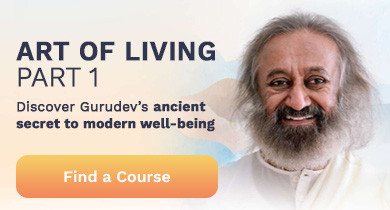
Maybe you were introduced to mindfulness through a friend, or a book, maybe even in a yoga class...and you were instantly intrigued! But what is mindfulness? Oxford defines it as:
A mental state achieved by focusing one's awareness on the present moment, while calmly acknowledging and accepting one's feelings, thoughts, and bodily sensations.
But if you’re like most people a mindfulness practice is an on-again, off-again relationship that has been hard. Much harder than expected. Why is that?!? Why is being fully present and aware seemingly unattainable?
Don’t beat yourself up! There are natural tendencies of the mind that seem to work against us and require some tools to manage all the goings-on inside our minds.
Fortunately, breathing exercises hold the key to effortless mindfulness in the present moment. Some breathing practices can even cultivate that greater awareness so mindfulness is a natural and effortless happening. So while mindfulness can be hard to attain on your own, breathing exercises unlock greater awareness so mindfulness naturally unfolds.
But before we look at some easy-to-do breathing exercises for mindfulness, let’s understand the natural tendencies of the mind first.
Mind-stuff
I would say that in a sense we are already mindful, or more accurately- mind-full of mind-stuff. One thought after another, and each with their own emotion is exhausting and prevents us from being fully present and having that inner calm and clarity we all long for. But we shouldn’t blame ourselves and give up on wanting to be more mindful. Having a basic understanding of some of the natural tendencies of our minds is the first step towards mindfulness.
Vacillates between past and future. Are you aware of how your thoughts swing back and forth between past and future, again and again? The swing of this pendulum only slows down or pauses with an increase in awareness. Try this simple exercise: Sit comfortably with your eyes closed and observe your thoughts. Place any thought about the future in an imaginary basket on your right side. Place any thought about the past in an imaginary basket on the left. Do this for 5 to 10 minutes. How many thoughts were about the present moment?
Clings to the negative. You may be thinking “That’s not me!” Only pessimistic people cling to the negative. But when a singular negative thing happens- maybe an insult- and a thousand other positive things happen any given day- what do you spend time thinking and talking about? That insult, of course! The next time you find yourself talking about something negative that happened, shift your attention to something positive and talk about that with the same intensity.
Doubts the positive. Have you ever wondered about whether or not a dear one loves you? They say they love you, but do they really love you? On the other hand, what about wondering if someone is really angry with you? No, we tend to doubt the positive. We tend to doubt if someone really loves us. And when it comes to something healthy for us or a recommendation from a friend, is it really that good? Even breathing exercises and meditation with so much research to back them up and so many personal recommendations, we doubt if they are really what they claim to be. Do breathwork and meditation really work?
Generalizes and eternalizes. Three or four people come into work late and what do we tell someone? “Everyone was coming in late today.” And if over a short period of time a few people come into work late? “People are always coming in late!” Generalizing and eternalizing are just tendencies of the mind. The more we notice this dynamic, the more we can have a say over such tendencies.
Storytelling. Who needs TV and movies when we have all the dramas going on in our minds?! We imagine so much about a situation either already happening or even yet to happen, perhaps the past also. We think this person thinks this way about me or this is going to happen a certain way. Worse is when we start creating a story, living with an imaginary dialogue that never happened, and is unlikely to happen. If this tendency is coming up for you, just having the awareness that, “Oh this is just storytelling happening” will help you drop it and become more aware.
What we resist, will persist. This is quite possibly the number one factor why we might struggle with a mindfulness practice. We simply cannot get rid of thoughts from the level of the mind. Try not thinking about something while trying to sleep, you will only have more thoughts about what you do not want to think about. The more we tell ourselves to not think, the more the mind is filled with thoughts. The more we let go and stop resisting, the easier it is for thought to become quieter and less in number.
Now that you are more aware of your thoughts, LOL, you can try this guided meditation to stop overthinking.
Breathing exercises for mindfulness
Why do breathing exercises for mindfulness work? In part because the breath is in the present moment. Breath isn’t in the past or future. It is now. But also because there is a special connection between breath and mind.
Different states of mind correlate with different breath patterns. Long and slow breathing patterns happen when you are relaxed. Fast and shallow breathing patterns happen when you are anxious or angry. The breath also has the ability to release stress and toxins!
Here are the best breathing exercises for mindfulness:
1. Straw Breath. You may already do this type of breathing without even realizing it. Inhale through the nose and exhale through the mouth as if there is an invisible straw in your mouth. Repeat for a few minutes. This is also a great tool for quickly lowering blood pressure, though not a substitute for medication. Turn this breathwork into a mindful breathing exercise by adding simple observations- as you inhale take your attention from your feet to the top of your head, and as you exhale let your attention naturally drift back down to the feet.
2. Ujjayi (ooo-jai) a.k.a. Victory Breath. A common breathing technique taught in yoga classes, ujjayi reins in overthinking. Using ujjayi breath helps you to be victorious over the mind. It is also taught through the Art of Living and used for 3-stage breathing.
3. Nadi Shodhan (nah-dee sho-dun) a.k.a. Alternate Nostril Breathing. Another popular breathwork taught in yoga classes, Nadi Shodhan is simple to learn but may take time to master. Here’s a video to guide you in learning alternate nostril breathing. It is a great technique to practice before any meditation session.
4. Bhramari (brah-mah-ree) a.k.a. Humming Bee Breath. If you are bothered by thoughts and strong emotions like anger or anxiety, Bhramari is for you! Although fairly easy to practice, this breathing exercise needs a guide. Here’s another video to get you started.
5. Bhastrika (Bha-STRI-kaah) a.k.a. Bellows Breath. Need to blast away too many thoughts? Bhastrika is your new best friend! This excellent tool is taught through the Art of Living during both the free introductory session called Beyond Breath as well as on the SKY Breath Meditation course. A few rounds of bhastrika and thoughts are blown away.
6. SKY Breath Meditation a.k.a. Sudarshan Kriya (su-dar-shun kree-ya). Though SKY Breath Meditation isn’t really a breathing exercise, it is much more than that, I am including it here since SKY works with the breath and cultivates mindfulness outside of practice time. Here are some of the mind and body benefits that both researchers and practitioners report:
Mind benefits of SKY
Greater mental focus
Enhanced optimism
Increased self-esteem
Life satisfaction increased
More joy
More mindfulness
Body benefits of SKY
Healthier blood pressure
Improved respiratory function
Enhanced deep sleep
Improved immunity
Lower cholesterol
Doubting whether breathing exercises or SKY Breath Meditation can improve mindfulness? Why not see for yourself? Attend a free breath and meditation online session where you can learn Bhastrika and more about SKY Breath Meditation. If you decide to give SKY a try you will get to learn and practice Ujjayi breath, 3-stage breathing, Bhastrika, and best of all, Sudarshan Kriya! With all that breathing and meditating you will be experiencing mindfulness exponentially!
Reserve your spot by clicking on the image below!
Not feeling any doubts? Click here to register for your SKY Breath Meditation course and be on your way to more mindfulness today!




























